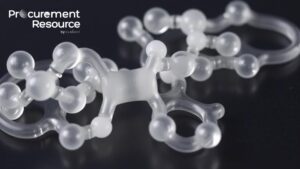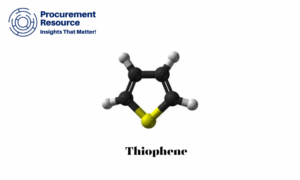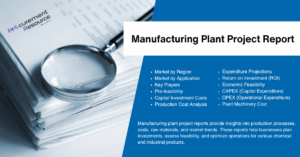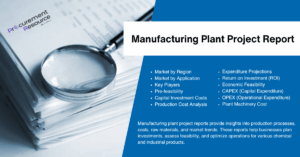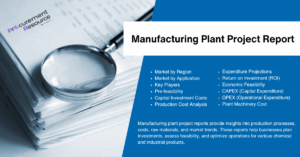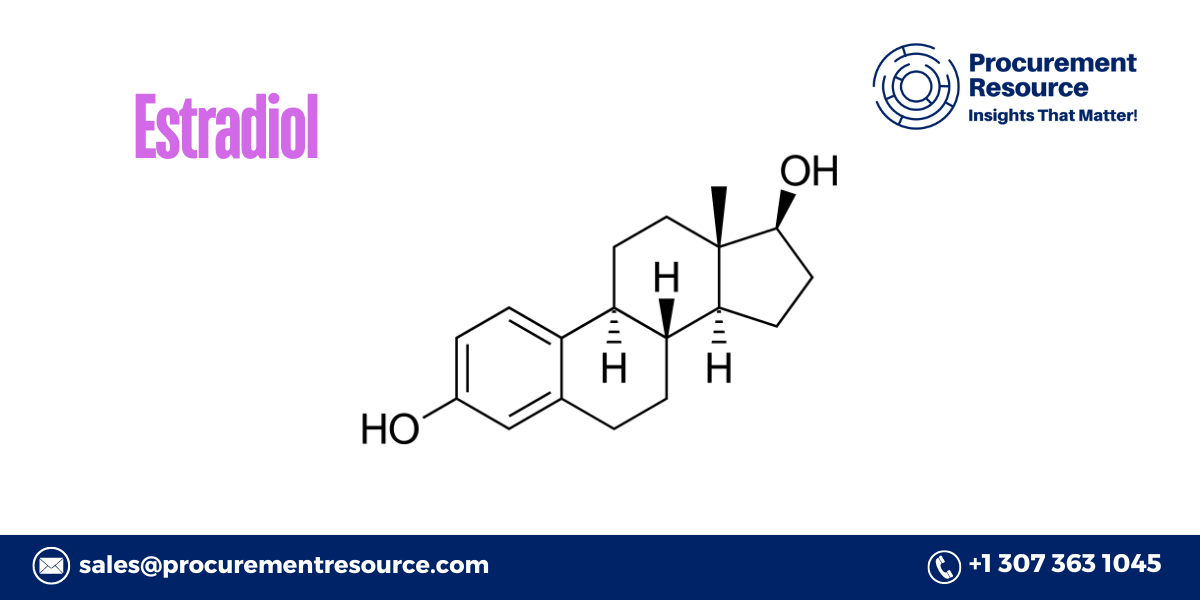
Estradiol Production Cost Analysis
Estradiol is a vital estrogen hormone widely used in various medical treatments, particularly in hormone replacement therapy (HRT) for menopausal symptoms, birth control pills, and the treatment of certain cancers. The production of estradiol is a complex process that involves several stages, from sourcing raw materials to synthesizing the hormone, ensuring purity, and complying with stringent regulatory standards. Understanding the Estradiol Production Cost Analysis is essential for pharmaceutical companies, healthcare providers, and policymakers. This article delves into the various factors that influence estradiol production costs, historical trends, and future projections.
1. Overview of Estradiol
Estradiol is the most potent natural estrogen hormone, playing a crucial role in the regulation of the reproductive and menstrual cycles. It is also used therapeutically to manage symptoms of menopause, osteoporosis, and certain types of breast cancer. As a key ingredient in various pharmaceutical formulations, estradiol is produced through complex chemical synthesis processes, ensuring its efficacy and safety for human use.Applications of Estradiol
- Hormone Replacement Therapy (HRT): Estradiol is a primary component in HRT, used to alleviate symptoms of menopause such as hot flashes, mood swings, and vaginal dryness.
- Contraceptives: Estradiol is used in combination with progestins in oral contraceptives to prevent ovulation and regulate menstrual cycles.
- Cancer Treatment: It is used in the treatment of hormone-sensitive cancers, such as certain types of breast cancer, by inhibiting the growth of cancer cells.
- Osteoporosis Prevention: Estradiol helps in the maintenance of bone density, making it a critical component in the prevention and treatment of osteoporosis in postmenopausal women.
2. Factors Influencing Estradiol Production Costs
The production cost of estradiol is influenced by a variety of factors, including raw material costs, the complexity of the synthesis process, technological advancements, regulatory compliance, and market demand. Each of these factors plays a significant role in determining the overall cost of producing estradiol.2.1 Raw Material Costs
The production of estradiol involves the use of several raw materials, including steroidal precursors, solvents, catalysts, and reagents. The cost of these materials can fluctuate based on global supply and demand dynamics, impacting the overall production cost.- Steroidal Precursors: Estradiol synthesis typically begins with a steroidal precursor, such as estrone or testosterone, which undergoes various chemical transformations. The availability and cost of these precursors are influenced by factors such as agricultural production, extraction processes, and market demand.
- Solvents and Reagents: The chemical synthesis of estradiol requires the use of various solvents and reagents. The cost of these materials can vary depending on their purity, availability, and the scale of production.
- Catalysts: Catalysts are essential in facilitating the chemical reactions needed to produce estradiol. The choice of catalyst and its efficiency can significantly impact production costs.
2.2 Production Process
The production process of estradiol involves several complex steps, including chemical synthesis, purification, and formulation. Each step contributes to the overall cost, depending on the efficiency of the process and the scale of production.- Chemical Synthesis: The synthesis of estradiol is a multi-step process that requires precise control of reaction conditions, including temperature, pressure, and pH. The complexity of the synthesis process can increase production costs, particularly if the process involves expensive reagents or catalysts.
- Purification: Once synthesized, estradiol must be purified to remove impurities and by-products. Purification techniques such as crystallization, chromatography, and distillation are commonly used, each adding to the cost of production depending on the required purity level.
- Formulation: After purification, estradiol is formulated into various pharmaceutical products, including tablets, patches, creams, and injections. The formulation process involves mixing the active ingredient with excipients, fillers, and stabilizers, which can contribute to the overall production cost.
2.3 Technological Advancements
Advances in technology play a critical role in reducing the production cost of estradiol by improving process efficiency, yield, and scalability. Innovations in chemical synthesis, process automation, and quality control can significantly impact production costs.- Process Automation: Automation of the synthesis and purification processes can reduce labor costs, minimize human error, and increase production efficiency. Automated systems can also improve consistency and quality, reducing the need for costly reprocessing.
- Synthetic Biology: The use of synthetic biology and metabolic engineering to develop more efficient production pathways can lower the cost of estradiol production. These technologies allow for the optimization of microbial or enzymatic systems to produce estradiol more efficiently, reducing reliance on traditional chemical synthesis methods.
- Quality Control Technologies: Advances in quality control technologies, such as real-time monitoring and high-throughput screening, can improve the detection of impurities and ensure consistent product quality. These technologies can reduce the need for extensive testing and reprocessing, lowering production costs.
2.4 Regulatory Compliance
Pharmaceutical production is subject to stringent regulatory requirements, particularly for hormones like estradiol. Compliance with these regulations can add to the production cost, as companies must invest in quality control, documentation, and regulatory submissions.- Good Manufacturing Practices (GMP): Compliance with GMP is essential for the production of pharmaceutical-grade estradiol. This involves strict adherence to guidelines on manufacturing processes, quality control, and record-keeping, all of which add to the cost of production.
- Regulatory Approvals: Obtaining regulatory approval for estradiol products requires extensive documentation, clinical trials, and safety testing. The cost of these activities can be significant, particularly in markets with stringent regulatory requirements such as the United States and Europe.
- Environmental Regulations: The production of estradiol may also be subject to environmental regulations, particularly regarding the disposal of hazardous waste and emissions. Compliance with these regulations can increase production costs, particularly for companies operating in regions with strict environmental standards.
2.5 Market Demand
The demand for estradiol can influence production costs by affecting economies of scale. High demand can lead to larger production runs, reducing the cost per unit, while low demand may result in higher costs due to underutilized production capacity.- Hormone Replacement Therapy: The aging population and increasing awareness of menopausal health have driven demand for hormone replacement therapy, boosting the demand for estradiol.
- Contraceptive Market: Estradiol is a key component in many contraceptive formulations, and changes in the contraceptive market, such as shifts in consumer preferences or regulatory changes, can impact demand and production costs.
- Global Market Trends: Global trends in healthcare, including the availability of generic alternatives and competition from other estrogen products, can influence the demand for estradiol and its production cost.
3. Historical Trends in Estradiol Production Costs
Over the past few decades, the production cost of estradiol has been influenced by various factors, including changes in raw material prices, technological advancements, regulatory developments, and shifts in market demand. Understanding these historical trends provides insight into the factors driving current and future costs.3.1 Pre-2000 Stability
Before the year 2000, estradiol production costs were relatively stable, with moderate fluctuations driven by changes in raw material prices and the adoption of new production technologies. The market for estradiol was primarily focused on hormone replacement therapy and contraceptives, with steady demand supporting stable production costs.- Stable Demand: The consistent demand for estradiol in HRT and contraceptives provided a stable market environment, with predictable production costs.
- Technological Evolution: Advances in chemical synthesis and purification technologies during this period improved production efficiency, helping to stabilize costs despite fluctuations in raw material prices.
3.2 2000-2015 Volatility
The period from 2000 to 2015 saw increased volatility in estradiol production costs, driven by several factors, including rising raw material prices, regulatory changes, and shifts in market demand.- Rising Raw Material Costs: The cost of steroidal precursors and other raw materials increased during this period, influenced by global supply chain disruptions and changes in agricultural production. These increases contributed to higher production costs for estradiol.
- Regulatory Changes: The introduction of more stringent regulatory requirements, particularly in the European Union and the United States, increased the cost of compliance for estradiol producers. These costs included investments in quality control, documentation, and clinical trials.
- Market Shifts: The introduction of generic estradiol products and competition from alternative hormone therapies impacted market demand, leading to fluctuations in production volumes and costs.
3.3 Post-2015 Trends
Since 2015, estradiol production costs have continued to fluctuate, influenced by ongoing changes in raw material prices, technological advancements, and evolving regulatory landscapes. However, the adoption of new technologies and process optimization strategies has helped stabilize costs in recent years.- Technological Advancements: The continued adoption of process automation, synthetic biology, and advanced quality control technologies has improved production efficiency and reduced costs. These innovations have enabled higher yields, lower energy consumption, and more consistent product quality.
- Raw Material Price Stabilization: While raw material prices remain subject to fluctuations, improved supply chain management and the development of alternative synthetic pathways have helped stabilize costs.
- Regulatory Compliance: The increasing complexity of regulatory requirements, particularly for hormone therapies, continues to impact production costs. However, companies that invest in robust compliance systems and quality control technologies are better positioned to manage these costs.
4. Estradiol Production Cost Forecast: 2024-2032
Forecasting the production cost of estradiol involves analyzing various factors, including raw material prices, technological advancements, global demand, and regulatory developments. The following sections provide an outlook on estradiol production costs over the next decade.4.1 Short-Term Forecast (2024-2025)
In the short term, estradiol production costs are expected to remain relatively stable, with moderate increases driven by fluctuations in raw material prices and potential supply chain disruptions. The ongoing recovery from the COVID-19 pandemic is likely to stabilize market conditions, but uncertainties related to global trade and energy prices remain key risk factors.- Raw Material Costs: The prices of steroidal precursors, solvents, and catalysts are expected to remain stable, with minor fluctuations reflecting global commodity price trends. Any significant changes in these markets could impact production costs, particularly for companies reliant on imported raw materials.
- Technological Advancements: Continued advancements in process automation, synthetic biology, and quality control technologies are expected to improve production efficiency, helping offset potential increases in raw material and labor costs.
- Regulatory Compliance: Compliance with evolving regulatory requirements, particularly in the European Union and the United States, is expected to remain a significant cost driver. However, companies that invest in compliance and quality control systems may be able to manage these costs effectively.
4.2 Medium-Term Forecast (2026-2028)
In the medium term, estradiol production costs are expected to face upward pressure due to factors such as increasing global demand, potential supply constraints, and rising energy costs.- Global Demand Growth: The demand for estradiol is expected to grow steadily, driven by expanding applications in hormone replacement therapy, contraceptives, and cancer treatment. Emerging markets, in particular, are expected to drive demand growth, which may lead to supply constraints and higher production costs.
- Energy Costs: Rising energy costs, particularly in regions dependent on fossil fuels, may increase the cost of production, particularly in energy-intensive processes such as chemical synthesis and purification. The adoption of renewable energy sources and energy-efficient technologies may help mitigate these costs.
- Supply Chain Resilience: The resilience of global supply chains will play a crucial role in determining production costs. Disruptions in the supply of key raw materials or components, whether due to geopolitical events, natural disasters, or trade restrictions, could lead to cost increases.
4.3 Long-Term Forecast (2029-2032)
Looking ahead to the long term, estradiol production costs are expected to continue their upward trajectory, albeit at a moderate pace. The growing emphasis on sustainability, coupled with advancements in biotechnology and process optimization, is likely to drive both demand and cost dynamics.- Sustainability Initiatives: As industries focus more on sustainability, there may be increased costs associated with implementing greener production practices, such as the use of renewable energy, sustainable raw materials, and waste reduction strategies. However, these initiatives may also lead to long-term cost savings and improved market positioning.
- Technological Innovations: Advances in synthetic biology, process automation, and real-time monitoring are expected to further improve the efficiency and scalability of estradiol production. These innovations may help offset rising costs and enable the production of estradiol at a lower cost per unit.
- Regulatory and Market Dynamics: The long-term outlook for estradiol production costs will be influenced by evolving regulatory frameworks, market dynamics, and consumer preferences. The adoption of new regulations, particularly related to environmental sustainability and product safety, could lead to increased compliance costs, but also create opportunities for differentiation and value creation.
5. Regional Analysis of Estradiol Production Costs
Estradiol production costs vary across different regions due to factors such as raw material availability, labor costs, energy prices, and regulatory environments. The following sections provide an overview of estradiol production cost trends in key regions.5.1 North America
In North America, estradiol production costs are influenced by high labor and energy costs, as well as the availability of advanced technologies and regulatory compliance requirements.- United States: The U.S. is a major producer and consumer of estradiol, particularly for hormone replacement therapy and contraceptives. Production costs in the U.S. are relatively high due to high labor wages, stringent environmental regulations, and high energy costs. However, the presence of advanced manufacturing infrastructure and access to cutting-edge technologies helps mitigate some of these costs.
- Canada: Canada’s estradiol production costs are generally lower than those in the U.S., but they are still influenced by similar factors, including labor and energy costs. The colder climate in Canada can also impact production costs, particularly for processes requiring heating or temperature control.
5.2 Europe
Europe is a significant producer and consumer of estradiol, with major production centers in countries such as Germany, France, and the United Kingdom. The region’s production costs are influenced by high labor costs, strict environmental regulations, and the availability of advanced technologies.- Germany: Germany is one of the largest producers of estradiol in Europe, with production costs influenced by high labor costs, stringent environmental regulations, and advanced manufacturing infrastructure. The country’s focus on sustainability and innovation has led to the adoption of more efficient and environmentally friendly production processes, which help offset some of the cost increases.
- France: France is another major producer of estradiol, particularly for the pharmaceutical and healthcare industries. Production costs in France are influenced by high labor costs, energy prices, and regulatory compliance requirements. However, the country’s strong emphasis on quality and innovation helps maintain competitiveness in the global market.
5.3 Asia-Pacific
The Asia-Pacific region, particularly China and India, is a growing producer and consumer of estradiol. The region’s production costs are influenced by lower labor costs, access to raw materials, and expanding industrial capacity.- China: China is one of the largest producers of estradiol globally, with production costs influenced by lower labor costs, access to raw materials, and significant investments in industrial capacity. However, rising labor costs and increasing regulatory scrutiny are expected to drive up production costs in the coming years.
- India: India is an emerging producer of estradiol, with production costs influenced by lower labor costs and access to raw materials. The country’s growing pharmaceutical and healthcare industries are expected to drive demand for estradiol, leading to potential supply constraints and higher production costs.
5.4 Latin America
In Latin America, estradiol production costs are influenced by regional economic conditions, labor availability, and environmental factors. The region’s growing population and increasing demand for pharmaceuticals and healthcare products are expected to drive production costs.- Brazil: Brazil is a major producer and exporter of estradiol, particularly for the pharmaceutical and healthcare industries. Production costs in Brazil are influenced by relatively low labor costs and favorable growing conditions for raw materials. However, rising input costs and increasing environmental regulations are expected to impact production costs in the coming years.
- Argentina: Argentina’s estradiol production costs are influenced by high input costs and challenging economic conditions. The cost of raw materials, labor, and energy, as well as the need for improved infrastructure, are significant factors impacting production costs.
5.5 Middle East and Africa
The Middle East and Africa region is a growing market for estradiol, with increasing demand driven by rising incomes and the expansion of the pharmaceutical and healthcare industries. Production costs in the region are influenced by labor availability, energy prices, and environmental factors.- Saudi Arabia: Saudi Arabia’s estradiol production costs are influenced by labor availability, energy prices, and regional economic conditions. The country’s focus on industrial diversification and investment in advanced manufacturing infrastructure is expected to drive growth in estradiol production.
- South Africa: South Africa is an emerging producer of estradiol, with production costs influenced by labor availability, land prices, and water scarcity. The cost of inputs and compliance with export standards are also significant factors impacting production costs.


